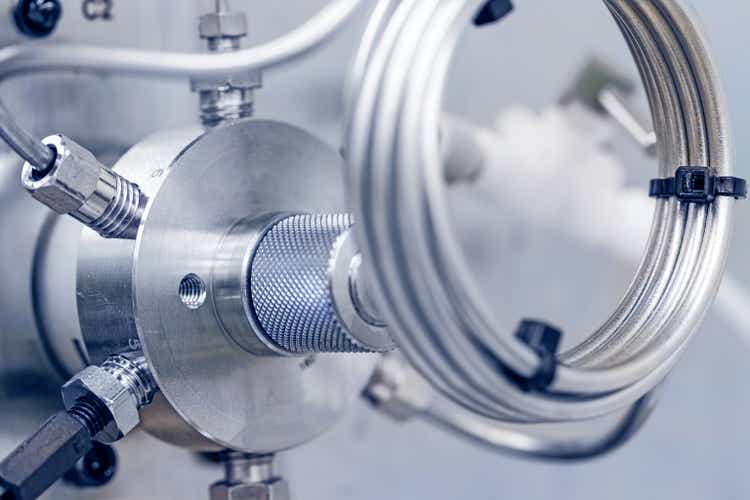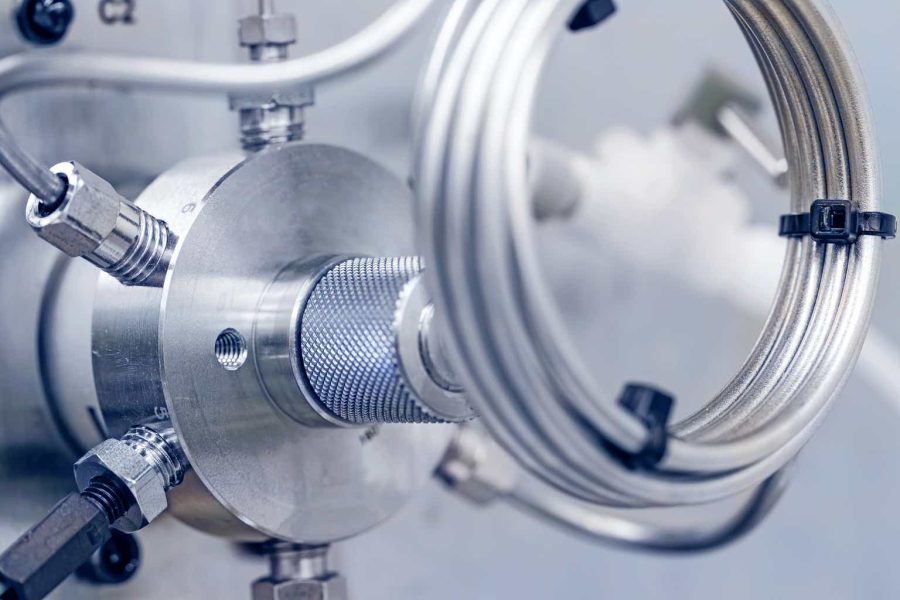Summary:
- Demand from biopharmas for life sciences equipment has not sustained high expectations in 2023, leading to weaker growth and negative revisions for companies like Agilent.
- Biopharma and industrial companies have significantly pulled back on spending for tools, and Agilent’s above-average leverage to capex makes it more vulnerable.
- Growth in the services business is encouraging, and I like the ongoing investments in oligonucleotide production capabilities as mRNA and siRNA pipelines continue to grow.
- With a run of underperformance and a credible case for mid-single-digit revenue growth with high margins and ROIC, Agilent is worth another look.

Markus Thoenen/iStock via Getty Images
It wasn’t that long ago that sell-side expectations for life sciences tools demand were sky-high, fueled not only by the pandemic, but a seemingly endless biopharma appetite for capacity growth and high expectations for growth in areas like sequencing-driven diagnostics. While many of these drivers are still valid, the growth trajectory hasn’t lived up to those high hopes, and several quality names, ranging from Agilent (NYSE:A) to Waters (WAT) have come up a little short of prior expectations.
Agilent shares are down a little more than 10% since my last update on the company, and I have to confess that even I bought into the hype to some extent – thinking that although the valuation was demanding and the stock wasn’t conventionally cheap, growth and margin expansion would come through and continue to support the valuation. While it worked for a bit, recent trends in biopharma in particular haven’t been good and investors have had to reset their expectations for the sector. If there is an upside to all of this, it is that the shares do now look more reasonably valued on more conventional valuation approaches.
Biopharma Is Resetting
Not that long ago, it seemed like biopharma companies (including larger pharmaceutical companies and biotechs of all sizes) had an almost bottomless appetite for tools, particularly those used for bioproduction and bioprocessing (used in the manufacture of biologicals like monoclonal antibodies). This segment has since seen a hard stop this year, as both larger and smaller companies have significantly pulled back on spending – the larger companies likely needing to digest prior investments and smaller companies needing to preserve capital.
Recent industry and sell-side conferences haven’t offered much good news, with Thermo Fisher (TMO) seeing no real improvement in the tools market in the third quarter. At the same time, demand from China has ground to halt – this was a major driver in Agilent’s negative guidance revision last quarter (China is 20% of Agilent revenue).
While Agilent doesn’t have particularly large exposure to bioprocessing (at least not compared to companies like Danaher (DHR) or Thermo), sales to this end-market were still down 8% for Agilent in the last quarter (with a double-digit decline in the small molecule business) after 6% growth in the prior quarter and small/mid-sized biotech capex spending has definitely slowed, hurt at least in part by what has remained a challenging funding environment.
This won’t last forever, but it’s still enough to drive lower expectations for Agilent and the sector as a whole. I do still like the long-term opportunity for tools (mass spec and liquid chromatography) and particularly for product segments like cell analysis and lab automation, but it will take some time for all of these drivers to work themselves out. I would also note, though, that the company has continued to invest in its Nucleic Acid Solutions business (where it competes with companies like Danaher, Eurofins, and Thermo), and I’m still quite bullish on the opportunities in areas like RNAi/siRNA, mRNA, and CRISPR.
Cyclicality And Capex Reliance Do Hurt, But Services Are Growing
Agilent has a reputation for being more cyclical than other life science companies, and that still holds true. Part of the issue is that the company is still more skewed towards capital equipment (around 40%) than many of its peers. While many sponsors are reluctant to cut consumables spending (slowing/stopping the work in the lab), capex is an easy target for budget freezes when funding becomes more scarce (or when even just concern that cuts may by coming). It also doesn’t help that the company has a sizable business in end-markets like chemicals, food, and refining where capex spending has likewise come under more pressure of late in light of slowed/paused expansion plans at many companies.
Offsetting this somewhat is ongoing growth in the company’s service businesses. The company’s lab enterprise management business continues to grow (where the company basically takes over all of a labs workflow needs for a monthly charge – basically “lab instruments as a service”), and management continues to expand its service contract business – about a third of the company’s installed base is now covered by service contracts, up about 50% over the last decade.
M&A Shouldn’t Be Seen As A Fix
Agilent will most likely just have to shoulder through this weaker spending environment and wait for budgets to rebound. I do still expect the basic tools market to grow at a long-term rate in the mid-single-digits (higher for cell analysis and lab automation), and I’m likewise still bullish on the Nucleic Acid Solutions business given the growing pipeline of relevant compounds (antisense, mRNA, siRNA, et al).
What I don’t want to see is a lot of M&A. While the BioTek deal in 2019 was arguably a good one, Agilent has a lot of losers in its track record. This point is underlined by management’s recent decision to shutter Resolution Bioscience – a liquid biopsy company that Agilent bought for $550M (excluding milestones), or over 10x revenue, in 2021.
The Outlook
Even in what has turned out to be a disappointing year with a lot of unexpected headwinds, Agilent is likely only going to see a small drop in reported revenue from the prior year. I don’t expect a full recovery in 2024, particularly as I think biopharma will remain careful on capex ahead of the election and China will remain under pressure, but I do think revenue will reaccelerate in FY’25, and I still think Agilent can generate around 5% long-term annualized revenue.
On the margin side, I do think that Agilent can get to 30%-plus EBITDA margins next year and mid-30%’s EBITDA within five years seems plausible. I expect Agilent to eventually get free cash flow margins into the 20%’s on a consistent basis, but I also do see more risk here than on the revenue side, as that’s not a trivial move from a historical average in the mid-to-high teens. Growing the service business should help, though, as should leveraging ongoing investments into the nucleic acid business.
Discounted cash flows suggest a fair value to me in the $120’s, and I get a similar result with a margin/growth-driven multiples-based approach – 17.5x my FY’24 EBITDA estimate and 5.5x my FY’24 revenue estimate get me to a $123-$127 range. Sell-side price targets are higher, but I’ll note that there’s a long history of assigning rich multiples to these stocks with not much reasoning beyond “they’ve always traded that high” and versions of “these markets will continue to grow at mid-single-digit or higher rates, with healthy margins, for a long, long time”.
The Bottom Line
I may well be doubling down on a failed idea, but I think Agilent is still worth a look after this reset. I’m not going to argue that Agilent is the best life sciences tools company out there (that’s a subject for another article someday), but I do think it’s better than what it has shown recently and what is reflected in today’s valuation.
Analyst’s Disclosure: I/we have no stock, option or similar derivative position in any of the companies mentioned, and no plans to initiate any such positions within the next 72 hours. I wrote this article myself, and it expresses my own opinions. I am not receiving compensation for it (other than from Seeking Alpha). I have no business relationship with any company whose stock is mentioned in this article.
Seeking Alpha’s Disclosure: Past performance is no guarantee of future results. No recommendation or advice is being given as to whether any investment is suitable for a particular investor. Any views or opinions expressed above may not reflect those of Seeking Alpha as a whole. Seeking Alpha is not a licensed securities dealer, broker or US investment adviser or investment bank. Our analysts are third party authors that include both professional investors and individual investors who may not be licensed or certified by any institute or regulatory body.
